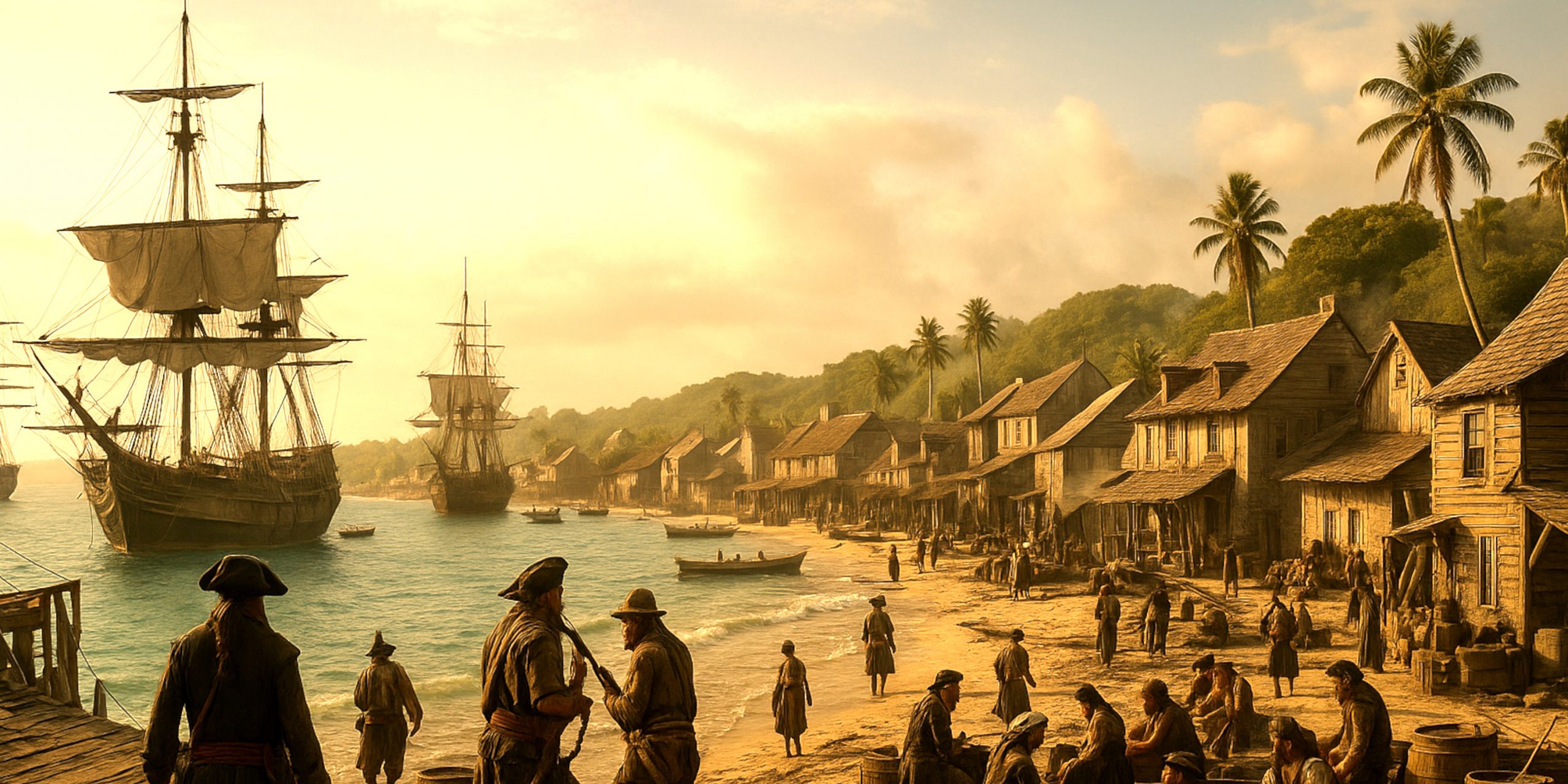
The so-called Republic of Pirates, based in Nassau, Bahamas, has captured the imagination of writers, historians, and television producers alike. Often portrayed as a democratic haven for rebellious seafarers, it has become the centrepiece of numerous myths about the golden age of piracy. But how much of it is true?
This article breaks down the legend and reality of the Republic of Pirates, assessing its political structure, key figures, naval strength, and the culture that developed around it.
What Was the Republic of Pirates?
Between roughly 1715 and 1725, Nassau became a pirate stronghold after years of neglect by British authorities. Following the devastation caused by the War of the Spanish Succession, the island offered safe harbour to hundreds of pirates, many of whom had once served as privateers. During this period, Nassau was largely outside formal imperial control, and its inhabitants operated with little regard for colonial law.
Though it was never an official state, the term “Republic of Pirates” has been used to describe the semi-organised, leaderless confederation of pirate crews who made decisions collectively and shared plunder according to agreed rules.
Fiction: A True Democracy of Outlaws
Many popular portrayals suggest the Republic was a utopia of liberty and equality, a radical democratic enclave where pirates forged a new society. This idea is heavily influenced by romantic literature and modern reinterpretations of piracy as rebellion against tyranny.
In truth, while pirate crews did often vote on key decisions such as appointing captains or dividing spoils, this applied only aboard their ships. There is no clear evidence that a larger democratic structure existed in Nassau itself. Pirates were individualistic, and any order that emerged was practical rather than ideological.
Fact: Key Figures Did Cooperate, Briefly

Edward Teach (Blackbeard), Charles Vane, Benjamin Hornigold, and Samuel Bellamy were all associated with Nassau during this period. These men were not equals in a governing council, but they did coexist and occasionally collaborate.
Hornigold initially attempted to enforce a code of conduct among pirates, particularly discouraging attacks on English ships. However, figures like Vane and Teach took a more aggressive stance, targeting vessels regardless of nationality. Infighting and conflicting loyalties ultimately prevented any sustained unity.
Fiction: Nassau as a Fortified Pirate Bastion
Popular stories often depict Nassau as a heavily defended port, with cannons lining the harbour and pirates standing guard. In fact, Nassau’s defences were crumbling. Fort Nassau had been damaged and was never properly rebuilt. When British forces finally moved to reassert control, they met little resistance.
The town itself was poorly maintained. It was more of a ramshackle village than a thriving pirate capital. Most buildings were wooden huts, and many ships anchored offshore rather than in the harbour.
Fact: Pirate Culture Was Distinct
Despite the lack of formal government, pirates in Nassau shared a distinct culture. This included unique clothing styles, drinking rituals, songs, and often crude but effective codes of conduct. Pirate articles dictated compensation for injuries, procedures for plunder division, and behavioural expectations.
While not entirely egalitarian, pirate life offered more opportunity to the poor and marginalised than naval or merchant service. Escaped slaves, former sailors, and outcasts found a place among the crews, often gaining rank and wealth denied them elsewhere.
Fiction: Anne Bonny and Mary Read as Symbols of Pirate Feminism

Anne Bonny and Mary Read, who sailed with Calico Jack Rackham, are often portrayed as feminist icons defying patriarchal norms. While their stories are remarkable, the reality is less idealistic.
They disguised themselves as men to join crews and survive in an overwhelmingly male world. Their participation in pirate life was possible only by concealing their identities and embracing the same brutal tactics as their male counterparts. There is no evidence that their presence sparked a broader movement or that women were widely accepted in piracy.
What Ended the Republic?
In 1718, Britain dispatched Woodes Rogers as Royal Governor of the Bahamas. His arrival marked the beginning of the end. Offering the King’s Pardon to any pirate who surrendered, Rogers combined diplomacy with military pressure. Many pirates accepted the pardon, including Hornigold. Others fled or were captured. Charles Vane resisted but was eventually hanged in Jamaica.
With support from the Royal Navy and merchant investors, Rogers began to rebuild Nassau. Fortifications were repaired, trade resumed, and British law was re-established.
The Seven Swords takeaway:
The Republic of Pirates was never a republic in any formal sense, but rather a temporary sanctuary for seafarers who had turned their back on empire and law. While it lacked the grand ideals often attributed to it, it did foster a culture of resistance and self-determination that continues to inspire.
Much of what has been said or written about it relies on exaggeration or wishful thinking. Yet at its core, the Nassau pirate enclave offers a rare glimpse into a world where power was seized by those who had long been denied it. Not a democracy, but not quite lawless chaos either, a fleeting moment when the pirates ruled themselves.
Watch the documentary:



